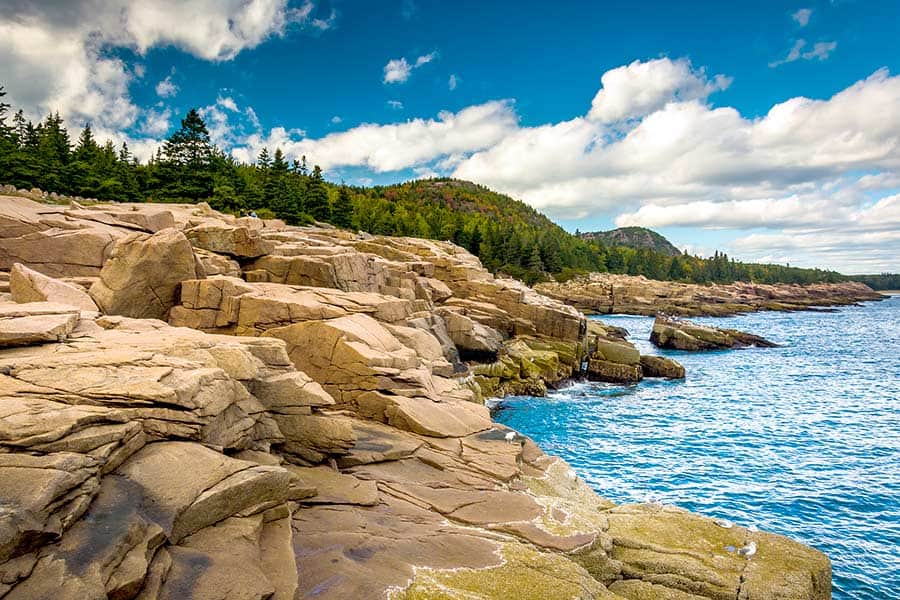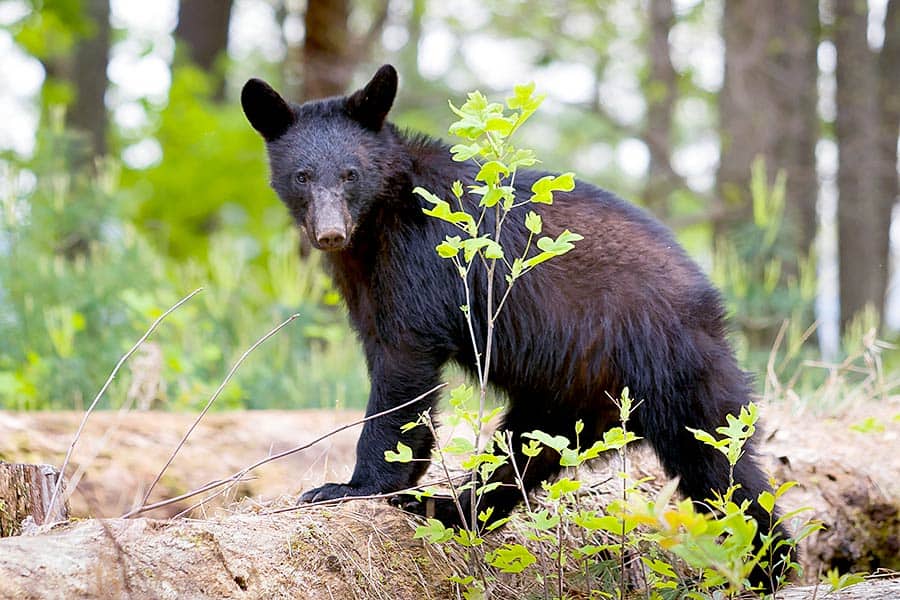
Acadia National Park is one of the most famous and visited parks in the United States. It is home to some of the most stunning scenery in the world, with majestic mountains and a gorgeous coastline. But could it also be home to grizzly bears?
Grizzlies are large, mighty mammals that have been a part of North American ecosystems for millennia, but their numbers have dwindled dramatically over the years. Read on to see if there is the potential of sighting bears in Acadia.
Acadia National Park – Are There Bears?

Acadia National Park is located on the rocky coast of Maine and offers one of the most diverse wildlife experiences in the United States. This vast wildlife refuge is home to various activities, from bird watching and wildlife observation to hiking and canoeing.
Over 40 species of mammals, dozens of birds, multiple kinds of reptiles and amphibians, and a wide selection of native plants are found throughout the park. From bald eagles to snowy owls, Acadia allows visitors to observe some truly spectacular wildlife. The abundance of plant life also serves as a valuable habitat and food source for a myriad of animals.
Knowing if grizzly bears reside in the stunning Acadia National Park is a source of interest for many reasons. First, grizzly bears are an iconic and fearsome species, and they are a symbol often associated with US national parks and rugged wilderness areas. Their mere presence can draw a huge number of visitors who want to see these magnificent animals roaming in their wild habitat.

Secondly, grizzly bears are larger and more aggressive than black bears. Therefore, knowing whether they are present in the park is essential for visitors so they can understand the potential risks and safety precautions they may need to take when visiting, hiking, camping, and storing food while in the park.
Lastly, understanding the wildlife in a park can be an essential element for the conservation efforts of certain species. Since grizzly bears are listed as threatened under the Endangered Species Act, protecting their habitat and populations is crucial for survival and recovery.
As a result of all of these elements, knowing whether they live in Acadia National Park can be important for visitors, researchers, and conservationists, making it a topic of interest for many readers.
Do not worry. There are no grizzly bears in Acadia National Park. They are not found in the northeastern United States, and their normal range is primarily limited to western North America.

Instead, the park is home to rarely seen black bears, which are smaller and less aggressive than grizzlies but still considered dangerous and require visitors to take necessary safety precautions when visiting.
Black bears are generally shy and tend to avoid people, but encounters can occur if visitors are not careful. Therefore, the park has developed visitor guidelines, including correctly storing food and trash, hiking in groups, and making noise to alert bears of your presence. Following these simple precautions are crucial for visitors’ safety and the health and safety of the bears themselves.
While visitors to Acadia National Park will not see grizzly bears, they can still enjoy the park’s natural beauty and other diverse wildlife. It is also an excellent destination to take in some unbelievable stargazing!
Van Camping Life Fun Fact: Established on March 1, 1872, Yellowstone National Park was the first in the park system.
Other Posts of Interest
- What Color of Tent is the Coolest? (Which Shades Work Best)
- Amazing Places To Camp In The Finger Lakes Region Of New York
- Van Camping And Senior Citizens – Are They A Match?
- Which Is Better, a Down or Synthetic Sleeping Bag? Pros & Cons
Grizzly vs. Black Bears
Grizzly and black bears might look quite similar to many people, but they have some major differences. Grizzly bears are typically identified by their brownish-black color, long claws, and characteristic hump on their shoulders.
Grizzlies tend to grow much larger than black bears and have more facial prominence with a more concave face profile. Black bears have shorter claws than grizzlies, and they are typically smaller in size and have quite a bit of variation in fur color. However, one of the most distinguishing features of black bears is their faces’ more rounded profile.
In addition, grizzly bears boast smaller ears that are more rounded; in contrast, black bear ears appear more prominent, more upright, and pointy at the tips.
Although grizzly and black bears may appear to look quite similar to some people at first glance, the above physical traits will help you easily differentiate between the two species.

Wildlife in Acadia National Park
Watching wildlife is one of the most relaxing activities when visiting parks, and Acadia National Park is a wildlife haven filled with diverse and spectacular wildlife, including snowshoe hares, mink, osprey, peregrine falcons, black bears, and whitetail deer.
Visitors hoping to glimpse some of the wildlife inhabiting this incredible park are in luck, as there are many ways to observe them. Whether you participate in one of the ranger-led wildlife programs or enjoy walking along the trails near Jordan Pond, you’re sure to see wildlife or signs of wildlife like tracks.
Wildlife can also be spotted along the parks’ open fields, sandy beaches, and shorelines – maybe you’ll even get lucky and spot some moose! So don’t forget to pack your binoculars and camera to capture some stunning shots.
There’s Still Plenty to See
While visitors won’t find grizzly bears in the park due to their natural range being limited primarily to western North America, they still may be able to catch sight of a black bear and enjoy the park’s incredible beauty while keeping safety precautions in mind.






